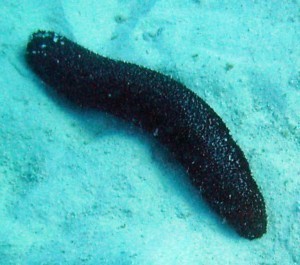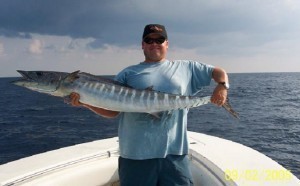Sea Cucumber Sizes
The size of sea cucumbers can go up to 16 inches,  although many are smaller than that. Some of the most well known species are the white star cucumber, the California cucumber, and the warty sea cucumber. It is the California sea cucumber that can reach a length of 16 inches. These creatures belong to the Holothuroidea class of the phylum Holothuroidea. There are more than 1500 species.
although many are smaller than that. Some of the most well known species are the white star cucumber, the California cucumber, and the warty sea cucumber. It is the California sea cucumber that can reach a length of 16 inches. These creatures belong to the Holothuroidea class of the phylum Holothuroidea. There are more than 1500 species.
Physical Characteristics
Their primary role is that of a sea scavenger. Many of them can be found at the bottom of the ocean. The sea cucumber has a lengthy body. The skin is somewhat leather-like.
Just like other echinoderms, these creatures possess an endoskeleton underneath the skin. These are joined together by tissues and can be expanded. When enlarged, these can turn into flat armor plates.
The size of sea cucumbers may differ, but they all communicate the same way: by generating hormone signals that traverse the waters. Another feature shared by these animals is the collagen in their bodies.
This allows them to squeeze into small spaces. It can do this by undoing the collagen links. While in the small gap, the sea cucumber can join up all the fibers to solidify its body.
These creatures have a respiratory tree in the inner water cavity. At the back, water goes in and out. This means an exchange of gases occurs within the system.
Protection and Defense
Regardless of the size of sea cucumbers, they all come with numerous defenses. The coral reef cucumbers are able to produce viscous cuvierian tubules. These are used to ensnare any would-be predators.
This substance is also released when the animal gets startled. These are emitted from the cloaca wall. These tubules can be replaced if needed. Some species take a week to grow back replacements. Others take a month or so. The time will vary depending on the species.
In some species, the tubules are released with holothurin. This is a poison that will kill any creature nearby. Its chemical properties are somewhat like soap, but it is far more lethal.
There are some cucumbers that lack these features. Instead they open their intestinal wall and eject their respiratory tree and innards. This has been proven to be an effective deterrent against pursuers.
Once ejected, the cucumber can regenerate these parts. Other cucumbers will squeeze their body tight and release water. This shrinking also makes the cucumber harder and much thicker. These creatures are usually inactive, but they do have the means to defend themselves.
How the Sea Cucumbers Feed
All the species have tube feet at the mouth. Not only are these bigger than regular tube feet, but these tentacles are branched too. The number of tentacles varies from 10 to 30, depending on the variant. The creature uses these tentacles to gather food. They feed on algae and plankton.
While the size of sea cucumbers can extend to more than a foot long, others are much smaller. For instance, the white sea cucumbers rarely go beyond four inches.





